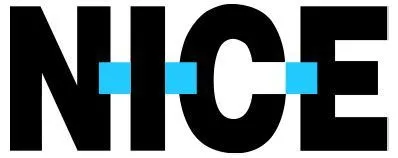What are Contact Center Analytics?
Contact center analytics are software tools that convert raw data into useful and actionable information by making correlations, uncovering trends and identifying root causes. Contact centers typically use multiple systems - order entry, CRM, ACD, IVR, quality management - in the course of serving customers. Additionally, they may handle contacts in a variety of channels, such as phone, chat and email. Add to this all the ways customers self-serve and it's easy to see how data silos can get created. Analytics tools overcome the limitations of those data silos by bringing all customer interaction information together so it can be analyzed holistically.
Contact centers without analytics tools run the risk of not being able to assess the entire customer journey. They may see snapshots of different touchpoints, but they can miss the pain points caused when a customer switches channels or is escalated to a different agent group. Analytics tools can assist with this type of omnichannel analysis. The insights offered by powerful analytics tools allow businesses to not only refine the customer experience, but also to make better decisions about resource management and volume allocation.
With the emergence of artificial intelligence (AI), contact centers also have the opportunity to add interaction analytics to their collection of analysis tools. Interaction analytics are capable of "listening" to calls and reviewing text, such as chat transcripts, in order to analyze the nature and tone of the conversations. With this information, interaction analytics tools can determine common reasons for contacts, assess the quality of the interaction, identify training opportunities, and alert managers to compliance violations.
The experience economy is making customer service more complex and also more important. Sophisticated times call for sophisticated tools. Businesses that realize this are relying more and more on analytics software.
Here are the benefits of contact center analytics and the solutions they can provide:
- Performance optimization: Contact center analytics helps identify key performance indicators (KPIs) and other metrics that measure agent performance, customer satisfaction, and operational efficiency. By analyzing these metrics, contact centers can identify areas for improvement and optimize their performance accordingly.
- Customer experience enhancement: Analytics enable contact centers to gain a deeper understanding of customer behaviors, preferences, and sentiment. By analyzing customer interactions and feedback, contact centers can identify patterns, trends, and pain points, allowing them to enhance the overall customer experience.
- Operational efficiency: Analytics can provide insights into contact center processes, workflows, and resource use. By analyzing data related to call volumes, handling times, agent utilization, and other operational metrics, contact centers can streamline their operations, reduce costs, and improve resource allocation.
- Forecasting and planning: Contact center analytics can help in demand forecasting by analyzing historical data, seasonal trends, and other factors. This enables contact centers to effectively plan staffing levels, allocate resources, and optimize workforce management, ensuring the right number of agents are available to handle customer interactions.
- Root cause analysis: Analytics can help identify the root causes of common issues, such as high call volumes, long wait times, or repeated customer complaints. By analyzing data from various touchpoints and systems, contact centers can pinpoint underlying issues and take proactive measures to address them, leading to improved efficiency and customer satisfaction.
- Real-time monitoring and alerting: Contact center analytics can provide real-time monitoring and alerting capabilities. By analyzing live data, contact centers can identify critical events, unusual patterns, or service level deviations, allowing them to take immediate actions to mitigate risks and maintain service levels.
- Personalized customer interactions: Analytics can enable contact centers to offer personalized customer interactions. By leveraging customer data and analytics insights, agents can access relevant customer information and preferences, enabling them to provide tailored and proactive support, leading to higher customer satisfaction.
- Compliance and quality assurance: Analytics can assist in compliance adherence and quality assurance efforts. By analyzing interactions and evaluating compliance with regulatory guidelines, contact centers can identify areas of non-compliance and take corrective actions. Additionally, analytics can help monitor and measure quality parameters to ensure consistent service delivery.
Overall, contact center analytics empowers organizations to make data-driven decisions, improve customer experiences, optimize operations, and drive better business outcomes. By leveraging the power of analytics, contact centers can stay ahead of the competition and meet the evolving needs of their customers.
How NICE is Redefining Customer Experience
NICE CXone is the industry’s only interaction-centric platform where channels, data, applications, and knowledge converge to improve customer experience at scale.
It is the leading, most complete and unified CX Platform on the market, used by thousands of organizations of all sizes around the world to help them consistently deliver exceptional customer experiences. CXone is a cloud native, unified suite of applications designed to help you holistically run your call (or contact) center operations.





